Fort Ras Al Khaimah stands as one of the most remarkable examples of a historical site in the UAE, where every stone tells a story of resilience and identity. While you might know Ras Al Khaimah for its adventures and adrenaline, there is a more profound side to this emirate, steeped in history.
Across the rugged mountains, fertile oases, and coastal plains, you will find plenty of towers, forts, and archaeological sites that stretch back thousands of years.
With over a dozen forts and nearly 60 defensive towers still standing as reminders of its past, this emirate is perfect for history and culture buffs. From the hilltop Dhayah Fort to the coastal Al Hisn Fort, each site preserves a chapter of Ras Al Khaimah’s story, one built on strength, trade, and tradition.
One of the most important things to remember while visiting these forts is to look out not just for the majesty of it, but also the echoes of heritage that still carry on in the UAE today. These structures aren’t just relics; they are living symbols of resilience, survival, and the way communities protected themselves against invasion.
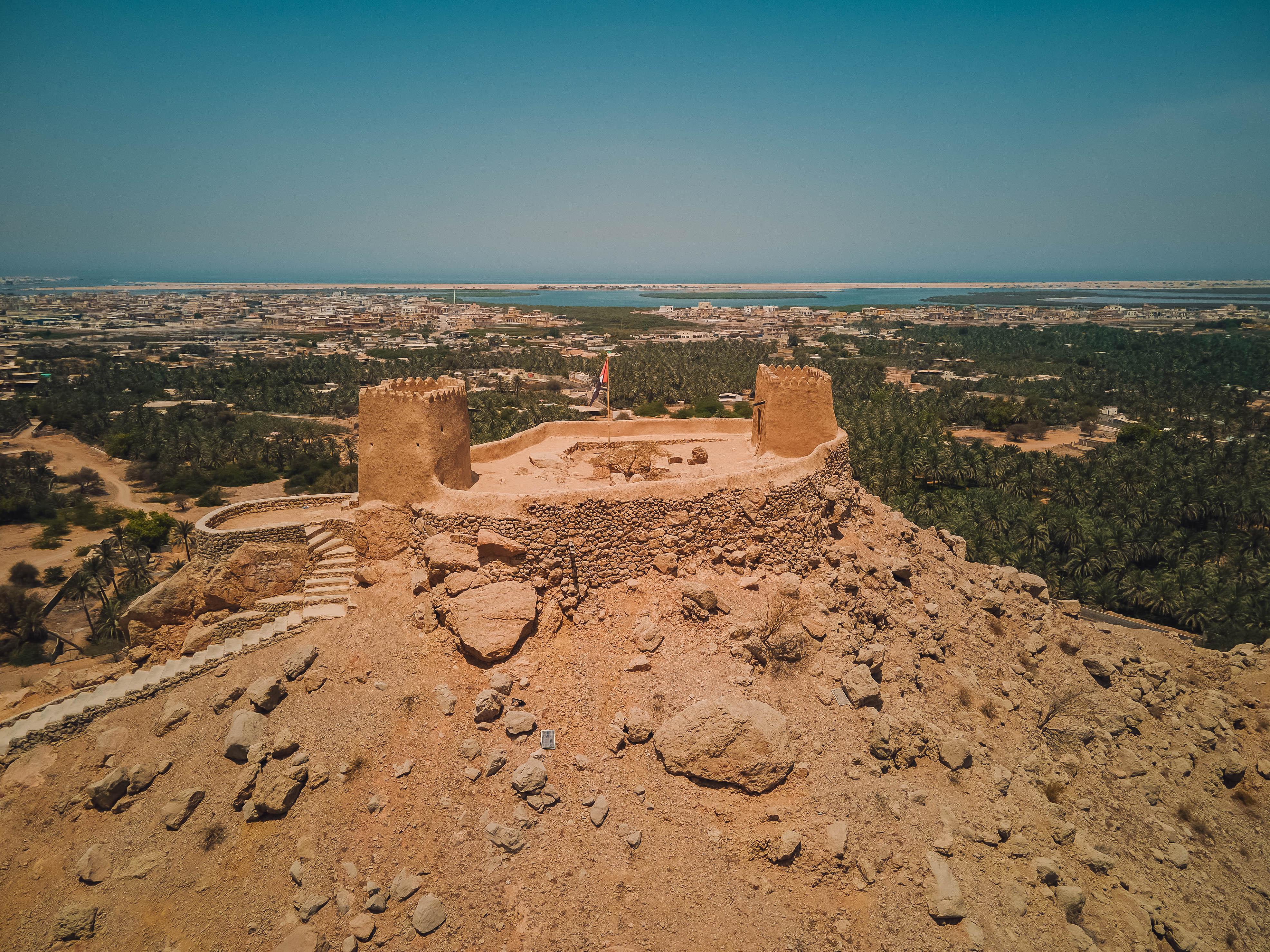
Discover the forts in Ras Al Khaimah
So if you’re curious about historical sites in the UAE in general, Ras Al Khaimah is a natural starting point.
From dramatic hilltop strongholds to family residences and peaceful coastal settlements, each fort in Ras Al Khaimah has a story worth hearing. Take a look and get planning for your next visit!
Dhayah Fort
Arguably the most famous of the lot, Dhayah Fort sits proudly on a hill north of Rams. Built in the 16th century, it was a vital military stronghold. The fort went down in history in December 1819, when British forces laid siege to it.
As the only remaining hill fort in the UAE, the 239 zigzagging steps leading up to it are totally worth it. Since being partially restored in 2001, the fort now serves as a sight to behold. The view stretches across palm groves, Jebel Jais in the distance, and even covers the waters of the Gulf. Definitely worth a hike if you’re visiting the emirate.
The site is open daily from 9 am to 5 pm, and while entry is free, as previously mentioned, access involves a steep climb, making it less suitable for those with mobility challenges. Limited parking is available near the base of the hill, so arriving early is best.
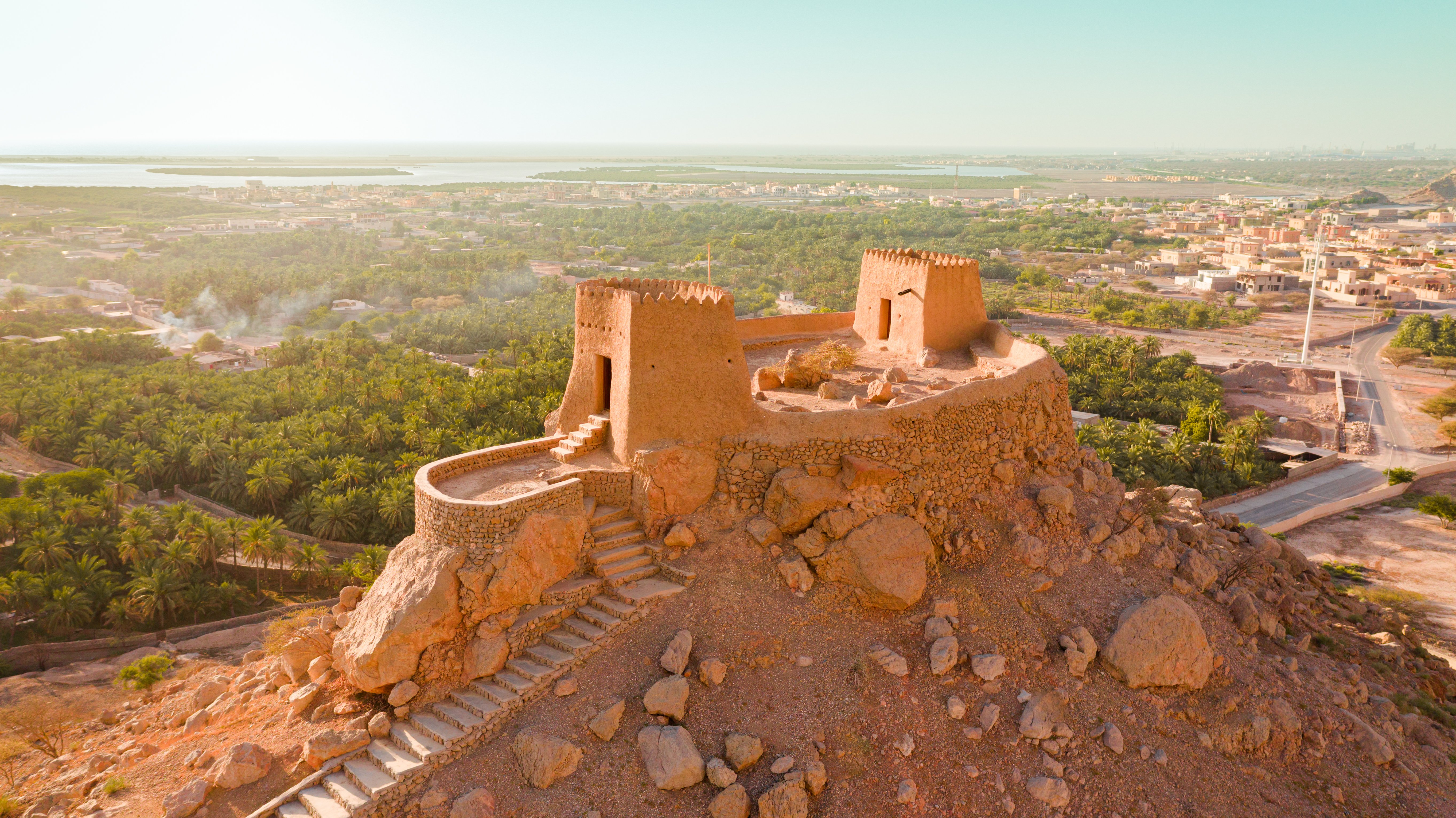
National Museum of Ras Al Khaimah (Al Hisn Fort)
One of the most important forts in Ras Al Khaimah, the former Al Hisn Fort stands tall and proud in the centre of the city. Now home to the National Museum, the structure was built in the mid-18th century during the Persian occupation.
Since then, it has been everything from the residence of the ruling family until 1964 to the headquarters of the police, and later even a prison.
Restored in 1987 under the late Sheikh Saqr bin Mohammed Al Qasimi, it became the National Museum. The building is a work of art itself, with coral stone walls, a spacious central courtyard, and wind towers that once cooled its rooms. Inside, you’ll find artefacts that trace Ras Al Khaimah’s history from ancient maritime trade to Bedouin life in the desert. It is a fort that has truly transformed into a custodian of memory.
The museum is open from Wednesday to Monday, 9 am to 5 pm, with a modest AED 5 entry fee for adults. Families will find it easily accessible, with shaded walkways and free parking just outside the entrance.
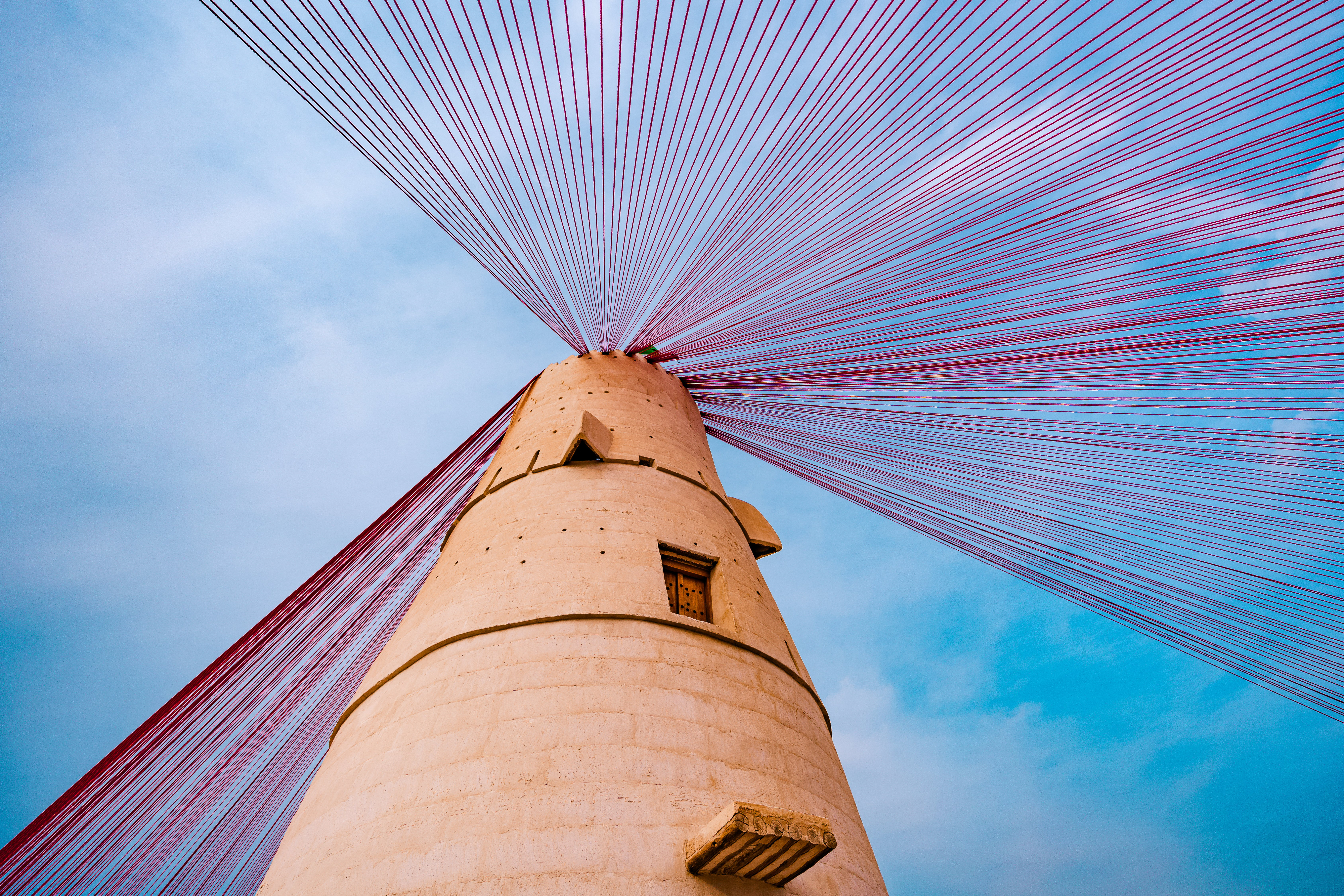
Al Falayah Fort
While Al Falayah Fort was built in the 18th century as a summer retreat for the ruling Quwasim family, its significance runs deeper. In 1820, it was here that Gulf rulers and the British signed a treaty that laid the groundwork for decades of relative stability along the Trucial Coast.
Although modest in scale compared to Dhayah, it carries a quiet authority. Today, Falayah has three buildings: a mosque in the western quarter, a stone tower in the centre and the main building that once housed the domestic quarters in the east.
Open daily from 9 am to 5 pm, the site welcomes visitors free of charge and offers easy access with on-site parking and flat terrain, making it suitable for families and those with limited mobility.
Al Hamra Island
Surprised to see this listed as one of the historical sites in the UAE? Al Hamra Island may look like a modern resort area today, but it has deep ancient roots.
Excavations uncovered evidence of a thriving settlement here, including large structures, pottery, beads, and fishing nets. Coastal communities would spend summers on the island, fishing and trading. These finds remind us that life in Ras Al Khaimah has always been shaped by its unique balance of desert and sea.
Al Hamra Island is freely accessible year-round, with parking available near public beaches and resorts. It’s best explored in daylight, especially around the older sections where the terrain is less predictable.
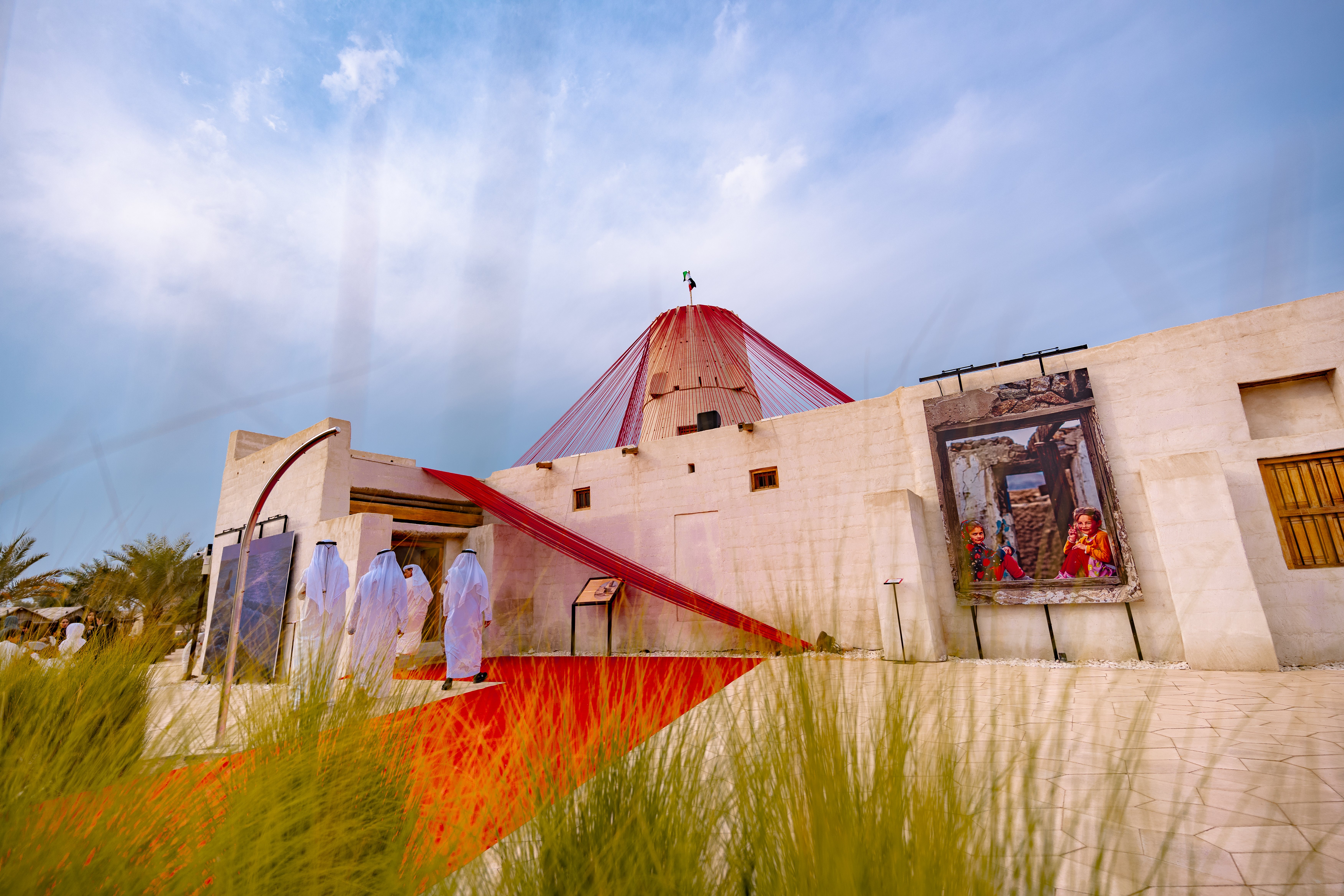
Other Forts and Towers
While the above-mentioned forts are always in the limelight, several other off-the-beaten-path forts in Ras Al Khaimah are just as amazing.
From Al Uraibi Fort and Al Mazra’a Fort on Al Hamra Island to Azen Fort and Nasla Fort in Hwailat, there are so many options to check out. Others have been lost to time, such as the once-important Al Seer Fort. However, if you have the time and interest, it’s worth driving across the scattered villages and mountains. Who knows - you might just spot something interesting!
Most of these smaller sites are open to the public without entry fees, some require short walks while others are better reached by a 4WD.
Why Visit These Forts?
People might mistake exploring forts in Ras Al Khaimah as a quiet activity in favour of the ziplines, mountain climbing and more. However, the experience isn’t just about admiring old walls.
Standing at Dhayah, wandering the museum halls of Al Hisn, or tracing the ruins at Kush, you’ll begin to understand the emirate’s resilience and its central role in regional history.
If you’re looking for more than just beaches and resorts, Ras Al Khaimah’s forts offer an unmissable window into the UAE’s past. You won’t regret it.
For more information, visit the Ras Al Khaimah Department of Antiquities and Museums


.jpg)
.jpg)

.jpg)
.jpg)

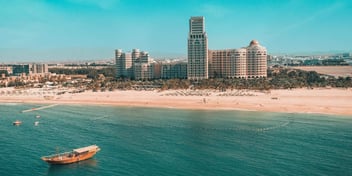
.jpg?width=352&name=Wynn%20Al%20Marjan%20(1).jpg)